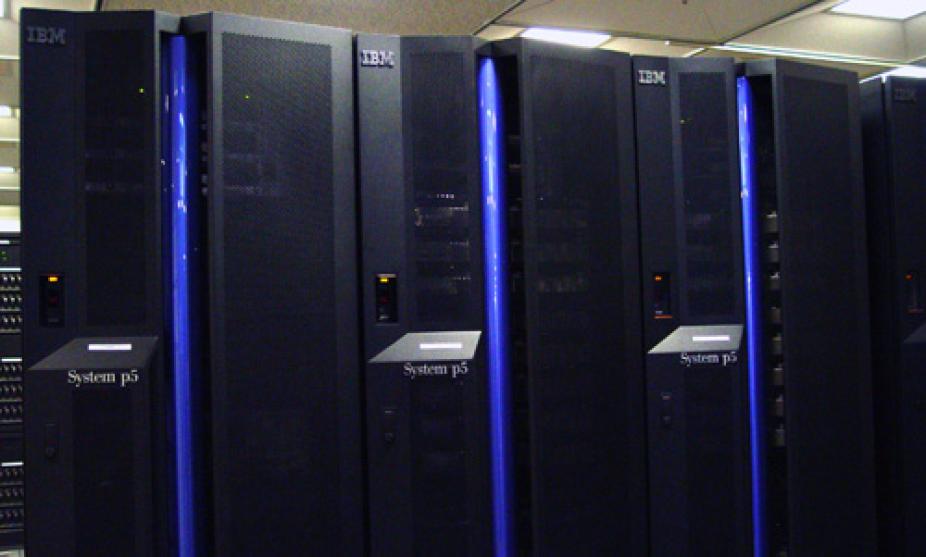IBM p5+-p575 - Blueice

IBM
In use: October 26, 2006 - June 16, 2008
Production use
Peak teraflops: 13.31
Processors: 1,696
Clock speed: 1.90GHz
Memory (terabytes): 4.83TB
Electrical power consumption: 325.40 kW
NCAR took delivery of a new IBM p5-575 supercomputer named "Blueice" on October 26, 2006. Blueice nearly tripled the center's sustained computing capacity. With a peak speed of 12 teraflops (12 trillion floating-point operations per second), the new machine enabled scientists to enhance the resolution and complexity of Earth system models, improve climate and weather research, and provide more accurate data to decision makers.
Blueice, which was acquired in the first phase of a procurement called the Integrated Computing Environment for Scientific Simulation (ICESS), began production operations in December 2006. In the second phase, a system called “Bluefire” was installed in 2008. The ICESS procurement provided the last supercomputing systems to be installed in the NCAR Mesa Laboratory's computing facility.
"The increased production capacity of Blueice will allow us to further enhance our computational campaigns," said Tom Bettge, director of Operations and Services for the Computational and Information Systems Laboratory, in a press release. "Scientists will be able to address capability problems in turbulence, nested regional climate modeling, and ocean modeling, as well as in near real-time numerical weather forecasting. They'll be able to scale their codes into larger problem sizes or increase the complexity of the physics in their simulations.
"The scientific community and numerous technical and business-support experts at NCAR provided guidance over many months, ultimately recommending the IBM proposal.”
Dave Turek, vice president of deep computing at IBM, was quoted as well: "NCAR is committed to implementing computer systems that will enable greater understanding of Earth's climate and weather. Entrusted with this extremely important mission, NCAR has established an exciting technology roadmap that will help allow the organization to meet its goals today and in the future."
The Blueice cluster was based on IBM's System p5 575 symmetric multiprocessor (SMP) nodes, using IBM's POWER5+ processor. The system had a processor clock speed of 1.9 GHz, 4 terabytes of memory, and 150 terabytes of FAStT DS4800 storage. It also had IBM's dual-link high-performance switch – a dedicated, high-speed network optimized for the node-to-node communications required by scientific codes. The cluster also used IBM's rear door heat exchanger (RDHX), a five-inch-deep cooling door that used chilled water to dissipate heat generated from the back of the systems. The RDHX offered innovations that helped optimize the power consumption, management, and cooling of infrastructure.
In addition to having a peak performance of 12 teraflops, Blueice delivered a sustained performance of as much as 2 teraflops. Sustained performance – which measures a system's computational rate while running a workload of atmospheric, oceanic, and geoscience models – is considered the best indicator of a system's scientific productivity. Blueice was the first supercomputer at NCAR to pass the sustained-teraflop milestone.